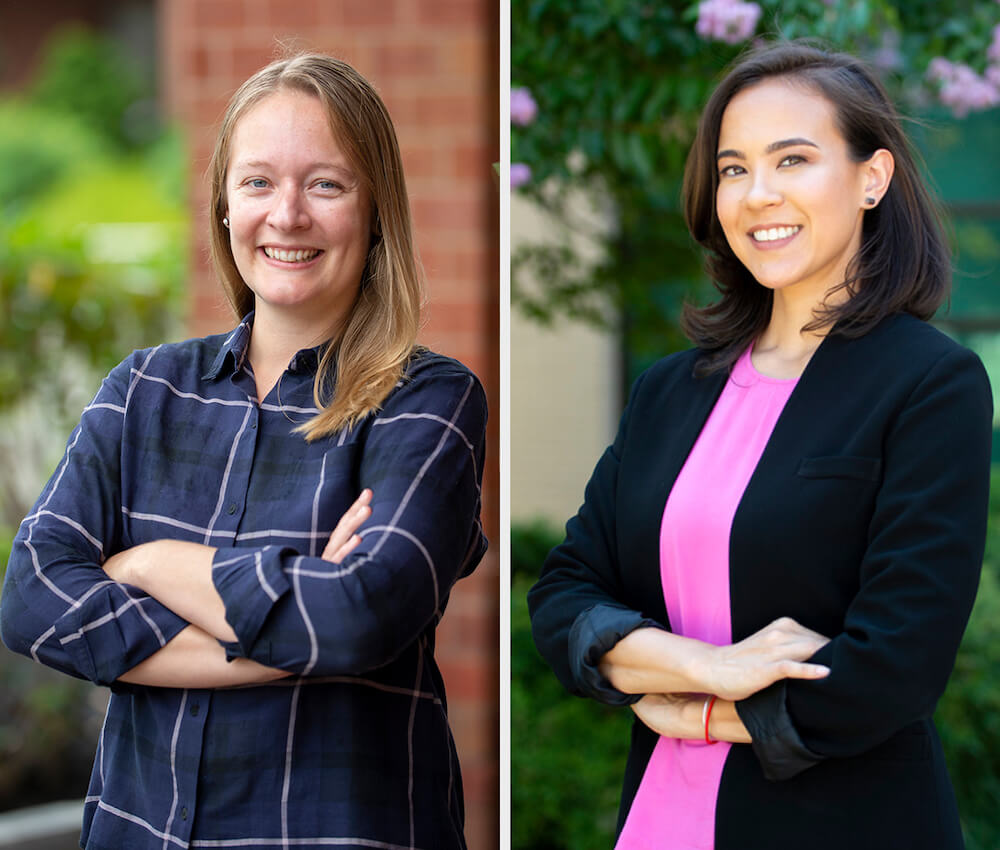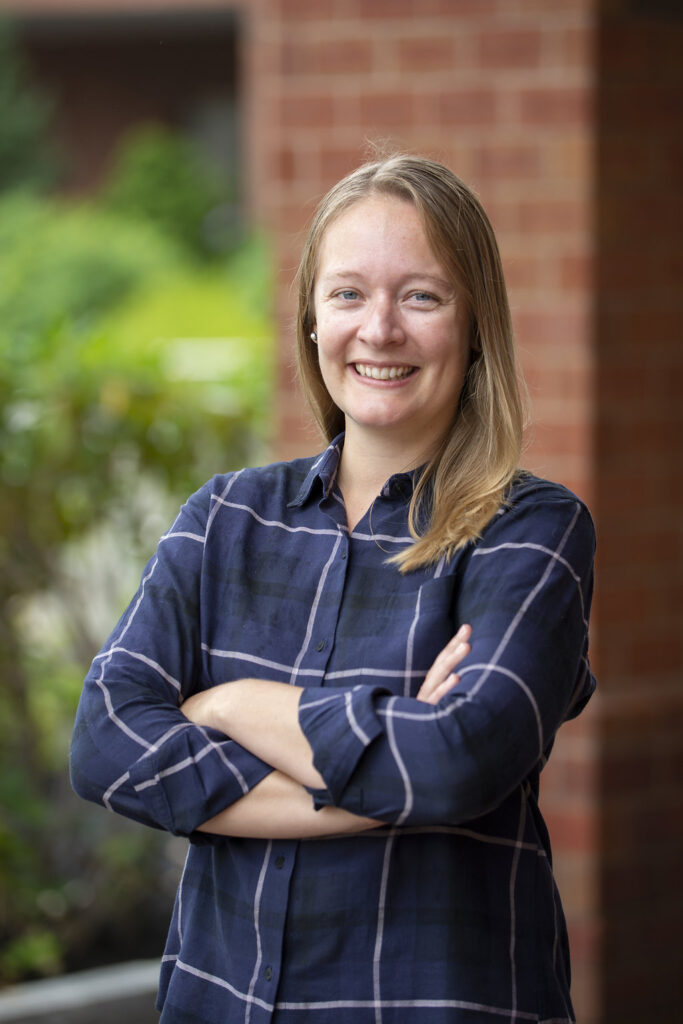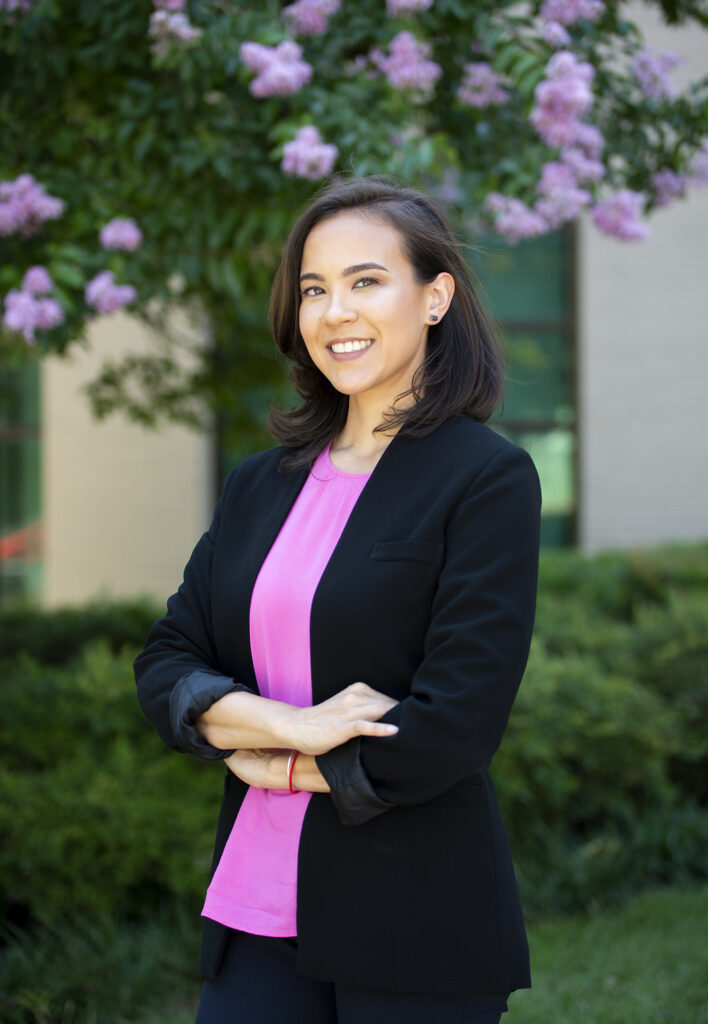
What does the issue of gender within financial inclusion mean to you personally?
AT: It’s a pretty universal experience for women that data gaps lead to a world that is designed with men as the default. I think it’s important in this field that we highlight the diversity of women’s experiences in different countries and at different socioeconomic levels. A pain point for many women is that we don’t believe our experiences are properly captured or represented. I feel fortunate that in a professional setting I can advocate for closing those gaps.
A pain point for many women is that we don’t believe our experiences are properly captured or represented.
JF: I’m constantly reminded of my identity as a woman. These reminders manifest themselves both overtly and subtly, and reveal that women are hugely forgotten or omitted from the equation. At home, caretaking responsibilities are predominantly taken on by women, which represent a tremendous opportunity cost in the form of foregone income or time away from individual pursuits. At work, gender inequality is reflected not only in yawning pay gaps but also in the unbalanced representation of women in senior positions. In the marketplace, the design of products continues to be based on the view that women are a monolith, thereby failing to respond to the unique needs and preferences of women. In every way I can – whether it’s in conversation with my peers or through our research at CFI – I look forward to building more gender-inclusive attitudes and approaches.
What are some key takeaways from your research?
JF: One main takeaway is that absence of evidence is not evidence of absence. A financial institution’s failure to classify clients by gender does not mean that it does not have any women clients. We ultimately have a choice in the data we collect and how that data get applied. Therefore, we should choose to actively and consistently gather gender-disaggregated data to more accurately diagnose the full extent of gender inequality in financial inclusion and design solutions accordingly.
We should actively and consistently gather gender-disaggregated data to diagnose the full extent of gender inequality in financial inclusion.
AT: One of the key takeaways is the importance of norms in dictating what barriers prevent women from accessing formal financial services. The existence of norms was not a surprise. Those of us who’ve worked in a cross-cultural context get that. The idea of designing norms transformative work is something important to highlight. I think many people believe norms are a force to design around, but there are ways to design financial inclusion interventions that can have a transformative outcome on the way people are thinking about gender roles. It’s not about dictating what gender roles should be, but promoting the principles of equal access and opportunity as something everyone is striving for. The actual norms people hold can be really surprising and not what people expect, and the first step is not to dictate what norms should be but to understand what stories people tell themselves. Then we need to think about designing financial inclusion interventions that are accompanied by dialogue that creates greater reflection on gender roles, and hopefully greater inclusion.
JF: “Reflection” is an operative word. Our role is to facilitate discussion amongst the stakeholders within a particular population, especially when it comes to norms. We must be intentional in our approach, which is not to wag our finger and be prescriptive, but rather to reflect back in order to influence positive change.
What has surprised you during your research?
AT: In our research process, we’ve talked a lot about the constraints of unpaid labor on women. There are studies in the US about time use among liberal, feminist leaning couples and how care and unpaid labor are still not evenly split in even when there’s the aspiration to do so. There’s an intention level and a systems level to the issue of unpaid labor. Part of it is whether two partners intend to split labor equally, and there are also larger, structural forces and societal pressures that reinforce inequality. In our industry, we need to be thinking about how financial services can address time constraints women face due to unpaid labor or their role as caretakers, especially when that burden is much larger for poor women in developing countries as Oxfam has documented.
JF: One thing that surprised me is that – despite the progress made in identifying data gaps and biases that result in suboptimal outcomes for women – there’s still so much ground to cover. Separately, the idea that gender is relational really struck me. When talking about advancing women’s economic empowerment, our focus often turns to what women can do or how women can be better equipped with the skills, tools, and knowledge required to improve their lot. Unfortunately, this thinking assumes that all women have full agency over the decision-making processes that govern their lives. As this is not the case, I have started to think a lot about the role that the men can and must play in reconciling gender disparities.
What about digitalization? Can you speak to the role of digitalization of financial services and gender?
JF: Digitalization is rapidly reconfiguring the menu of financial services and products that are being offered and the ways in which they are being delivered. This flurry of activity creates a lot of momentum and excitement that can be channeled to bring women into the fold. But it’s important to recognize that digitalization can also present a significant risk of further excluding already marginalized groups, including women. Digitalization effectively serves as a multiplier: while it has the potential to yield enormous gains for women, it can also further entrench norms that may not favor women.
AT: We often start with an assumed positive outcome of digitalization and DFS. These tools aren’t positive or negative. We get a little over-excited about the potential of technology in our industry sometimes, without thinking about the risks that automation pose, for instance in automated credit decision. Further entrenching exclusion of unbanked and underbanked groups is a real danger because using bad data in a data driven economy can create bad outcomes. When we don’t have a good historical picture or data trail of unbanked, low-income women in developing countries, algorithm-based decisions may not result in the best outcomes for those people. We have the assumption that if we add technology, things should just be better, but it’s not purely a technology issue. Inclusion is a socio-technical issue.
We sometimes get a little over-excited about the potential of technology without thinking about the risks.
JT: And our role at CFI is to observe where digitalization can go wrong and steer efforts so that it can be applied to go right.
AT: And that’s where the consumer protection role comes in: we need to give people access to digital financial services with appropriate guardrails and the capability to use it best for themselves.
Can you briefly discuss digital interventions that get it right?
AT: Digitizing cash transfers actually address some of the privacy concerns women have about their finances. It doesn’t get a dialogue of norms going, but there are papers that have looked at cash transfers to rural women in India and how notifications of the transfer on a mobile device allowed women to know when the money was deposited, giving them the opportunity to spend it on something they thought was important before negotiating with their husbands. The notification shifted the power dynamic a little bit. Accompanying that with dialogue and community-based work could actually then have a greater impact. This is an example of how a digital delivery mechanism can address a privacy need for women giving them a little more financial agency.
Accompanying cash transfers with dialogue and community-based work could have great impact.
JF: As a think tank, having a finger on the pulse of customers is extremely important to understand how well their needs are being met by financial institutions and other actors. While one-on-one interviews help bring great depth and granularity to our research, we also want to be certain that the data we collect are representative and accurately reflect the scope of any given problem. This is where technology can play a central role. Mobile-based technologies such as interactive voice response can be deployed at relatively low cost to collect feedback directly from customers at scale. In addition, the wealth of data generated by digital platforms can also be used to draw insights on the financial lives of women and other client segments.
How do you see CFI’s gender research progressing? Where’s the “white space”?
JF: I am excited about the direction in which CFI is heading. By making women’s economic empowerment a strategic priority, we can employ a systematic methodology to define and test our theory of change for how women’s financial inclusion can lead to better outcomes for women. Furthermore, connecting gender into the broader development agenda to advance social economic development is something I’m really passionate about. My work at CFI has focused on financial capability, and I’ve found that strengthening one’s financial capability has positive ripple effects in other domains of our lives and vice versa. In much the same way, I believe that an intentional focus on improving women’s financial lives will yield positive externalities that will empower women.
AT: We think there’s a need for better consumer protection, better financial capability interventions and an overall policy assessment to evaluate what areas of focus result in greater women’s financial inclusion. We think that focusing on these three pillars will help the digital economy actually work for women. Simultaneously, we need to be aware of the absence of sex-disaggregated data and the norms-based work that needs to accompany any interventions aimed at closing the gender gap in financial inclusion. Those are the areas where CFI’s work is relevant and could be strengthened with a gender lens.
JF: I’m also looking forward to speaking with women directly to inform best practices and policies. It will also be important to evaluate the effectiveness of said practices and policies by monitoring how well – or not well – they are being operationalized on the ground.
Authors











